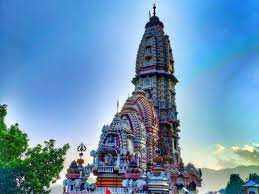A LOOK AT THE HIGHEST PEAKS ACROSS THE GLOBE

Mountains
are nature’s awe-inspiring masterpieces, towering above the earth like colossal
dreams carved into the land. A true gift from the heavens, these majestic
giants stand as testaments to the planet’s raw power and beauty. On Earth,
there are over 109 peaks that soar above 7,200 meters (23,622 feet) into the
skies. Many of these towering giants are nestled along the border of the Indian
and Eurasian continents. Today, we invite you to journey through
the world’s highest peaks. Read on as we unveil the top 6 tallest mountains in
the world, and delve into their awe-inspiring heights and history!
1. MOUNT EVEREST
Mount
Everest, towering at 8,848 meters (29,029 feet), reigns as the world’s highest
peak, straddling the border of Nepal and China. Nestled in the Mahalangur
Himalaya range, this majestic giant is known as "Sagarmatha" in
Nepali and "Chomolungma" in Tibetan. Its fame grew following a survey
by Sir George Everest, whose name immortalized the peak. As the crown jewel of
the Himalayas, Everest stands proudly at the top of the world’s highest
mountains. In 1953, Edmund Hillary and Tenzing Norgay Sherpa made history by
becoming the first humans to conquer its summit, cementing Everest's legendary
status.
2. MOUNT K2
Standing at
8,611 meters, Mount K2 is the world’s second-highest peak, nestled in the
rugged Karakoram Range on the border of China and Pakistan. As the tallest
mountain in the Karakoram, K2 has earned the nickname "Savage
Mountain" due to its notoriously difficult and treacherous climb. Despite
its perilous reputation, over 250 brave mountaineers have reached its summit. With its many formidable peaks, the Karakoram Range finds its most formidable challenge in K2, where only the most skilled climbers dare venture. It
remains one of the ultimate tests of human endurance and determination in the
world of mountaineering.
3. KANGCHENJUNGA PEAK
At 8,586
meters, Kanchenjunga is the third-highest mountain in the world and India’s
tallest peak, often referred to as "Majestic Kanchenjunga."
Straddling the border between India and Nepal, its name in Tibetan means
"The High Treasures of the High Snow," symbolizing five sacred
treasures: gold, silver, jewels, grains, and sacred books. This towering beauty
holds a deep spiritual significance for the local people. In 1955, climbers
Brown and George Band etched their names in history as the first to successfully
conquer Kanchenjunga’s daunting heights, marking a monumental achievement in
the world of mountaineering.
4. MOUNT LHOTSE
Rising to
8,511 meters, Mount Lhotse is the fourth-highest peak in the world, standing
just south of the mighty Mount Everest in the Khumbu region, straddling the
border of Nepal and Tibet. Known for its perilous, rocky slopes, Lhotse has
earned a reputation as one of the deadliest mountains, with countless climbers
succumbing to its treacherous conditions. Despite this, the mountain’s allure
persists, and in 1956, Ernst Reiss and Fritz Luchsinger made history by
becoming the first to summit Lhotse. The dramatic landscape and the mountain’s
intimidating presence make Lhotse a challenging yet captivating destination for
daring mountaineers.
5. MOUNT MAKALU
Standing at
8,463 meters, Mount Makalu is the fifth tallest mountain on Earth, nestled in
the Mahalangur Range just 19 km southeast of Mount Everest. Known for its sharp
ridges and steep, unforgiving slopes, Makalu is a true challenge for climbers.
Its isolated, pyramid-like shape adds to the difficulty, with its knife-edge
ridges making the ascent particularly treacherous. On average, climbers take 61
to 65 days to conquer its heights. Makalu’s formidable beauty was first tamed
in 1955 when Lionel Terral and Jean Cousy made history as the first to reach
its summit, marking a remarkable achievement in mountaineering.
6. MOUNT CHO OYU
Mount Cho
Oyu, standing at 8,201 meters, is the world’s sixth-highest peak, located in
the Himalayas on the border of Nepal and Tibet. Known for being one of the most
accessible 8,000-meter mountains, Cho Oyu offers relatively easier climbing
conditions compared to its higher counterparts. In October 1954, H. Tichy, S.
Jochler, and Pasang Lama made history by reaching the summit, with Ang Phiri
Sherpa becoming the first Nepali to conquer it. Climbers can ascend from three
different sides—northwest, northeast, and southeast—making it a popular choice
for trekkers looking to gain experience before tackling the daunting heights of
Mount Everest.
You may like post

WITNESS THE MAGIC OF TULIP SEASON ACROSS INDIAs SCENIC LANDSCAPES
Discover Tulip Blooms in India’s Most Beautiful Spring Destinations

THE MOST BREATHTAKING TRAIN RIDES TO TAKE THIS FALL
Explore Autumn’s Best Rail Adventures Around the Globe







